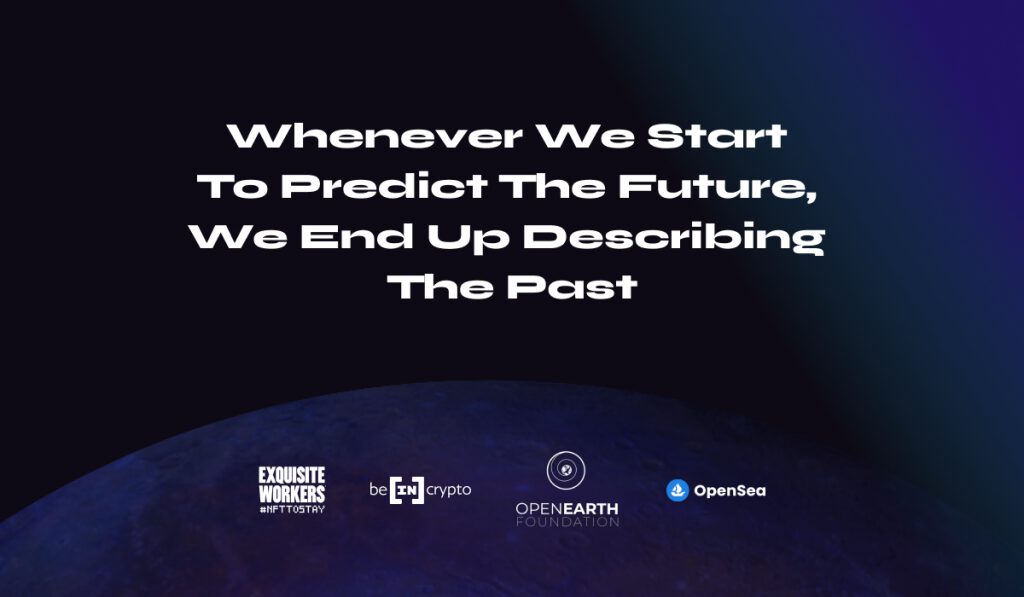“Whenever we try to predict the future, we end up describing the past.”
It’s a misconception that the future lies in front of us and the past behind — we are no more linear as time travelers than apples are shaped straight. I prefer a notion where we move laterally in circles and cycles, weaving between possibilities and eventualities, where deja vu and past lives are all mixed in the same consciousness.
If we try to move forward in time, we only succeed at recycling not only our past but the past of those before us.
Perhaps the future is the clear shard of the past, a diamond sliver of compressed scars and experience, carbonized from eons of pressure into a near-elemental form. The future always looks sparkling and radiant, seemingly both perfect and inevitable, clear as pure light itself.
In reality, the future is never what we think it will be and, by definition, perpetually out of reach. Art interprets and eases the pain of an unreachable future. The shard of art lies next to the shard of the future, sometimes illuminating, sometimes refracting its light and creating a prism of possibilities.
In order to compliment the future, then art must remain oblique like a kaleidoscope, not like a pane of glass. The art of the future will need to resist the efficiency and minimalism of thought and motion that technology and economy blindly rush towards. Art must force not only the artist, but the audience, through meandering paths, scenic routes, and a series of dead ends in search of not a destination but a reflection and consideration of where exactly it is we are going.
Self-awareness is man’s mental equivalent of an opposable thumb; art is the tool we wield to exercise that awareness and ask critical questions like “why?” Just as Goya and Lennon in their respective centuries used art to invite us to consider the folly of war, the art of the future must carry a heavier burden of history and more powerfully stand in the way of efficiency.
The art of the future will face the forces of singularity, the combining and converging of many elements from government to technology to finance into seamless arcs of efficiency.
These arcs will rightfully be heralded as breakthroughs for society and provide solutions to the world’s problems, removing friction, aligning interests, and increasing productivity. Art must stand in the way. Art must lay down in the tracks and create the friction that allows society to pause the engine of growth long enough to consider the bloody stain beneath.
The art of the future will face the forces of transcendence, the perpetual rising above and abstraction of issues in search of homogenization and equality of all. This will be seen as an openness and holding of space and a celebration of the long tail of identity. But, again, art must stand in the way and create the questions and conflict that can give voice to a muted culture.
Finally, art of the future will face the forces of antimatter. Increased digitization will increase the pace of art production and distance the creator from the surface, all while expanding the realm of art (for the better).
Art must stand in the way of this antimatter. The true epiphany will not be the dematerialization of art in favor of digital, but the merging of physical and digital into parallel simultaneous experiences and objects that reinforce and strengthen each other.
If the artists of the future wish to continue, they will need to look backward as well as forwards and stand as the guardians of creativity in the face of progress.


